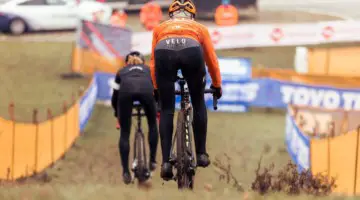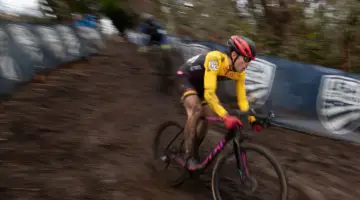The start of cyclocross season in Toronto and Roanoke is less than eight weeks away, so to help you get ready for your 2018 season, we are kicking off an informal #crossiscoming series to help you dial in your training and equipment for the start of your racing schedule.
Our series starts with a classic Training Tuesday piece from Chris Mayhew about taking a summer break before ramping up for your cyclocross preseason training.
You’ll recall this series of articles started with an article about taking a break. But that was six months ago! Hopefully you’ve been doing a lot of racing and training since then. But nothing lasts forever, and it’s time for a break yet again. This time the motivations and goals are different, with the idea being to start moving the focus from summer riding & racing to ’cross and ’cross-specific preparation.
First, let’s define what I mean by a break. I mean 5 to 10 days of minimal intensity, no racing and a lack of structure. Skip your intervals, ride whatever bike has been getting dusty and feel free to not ride as many days as you like.
How long a break you take is up to you. The more you’ve been training, in terms of volume, the longer your break should be. If you’re doing six to seven hours a week maybe you only need a long weekend off. If you’ve been doing a lot of racing or 15-hour weeks, I’d suggest something like 7 to 10 days including one weekend day off the bike.
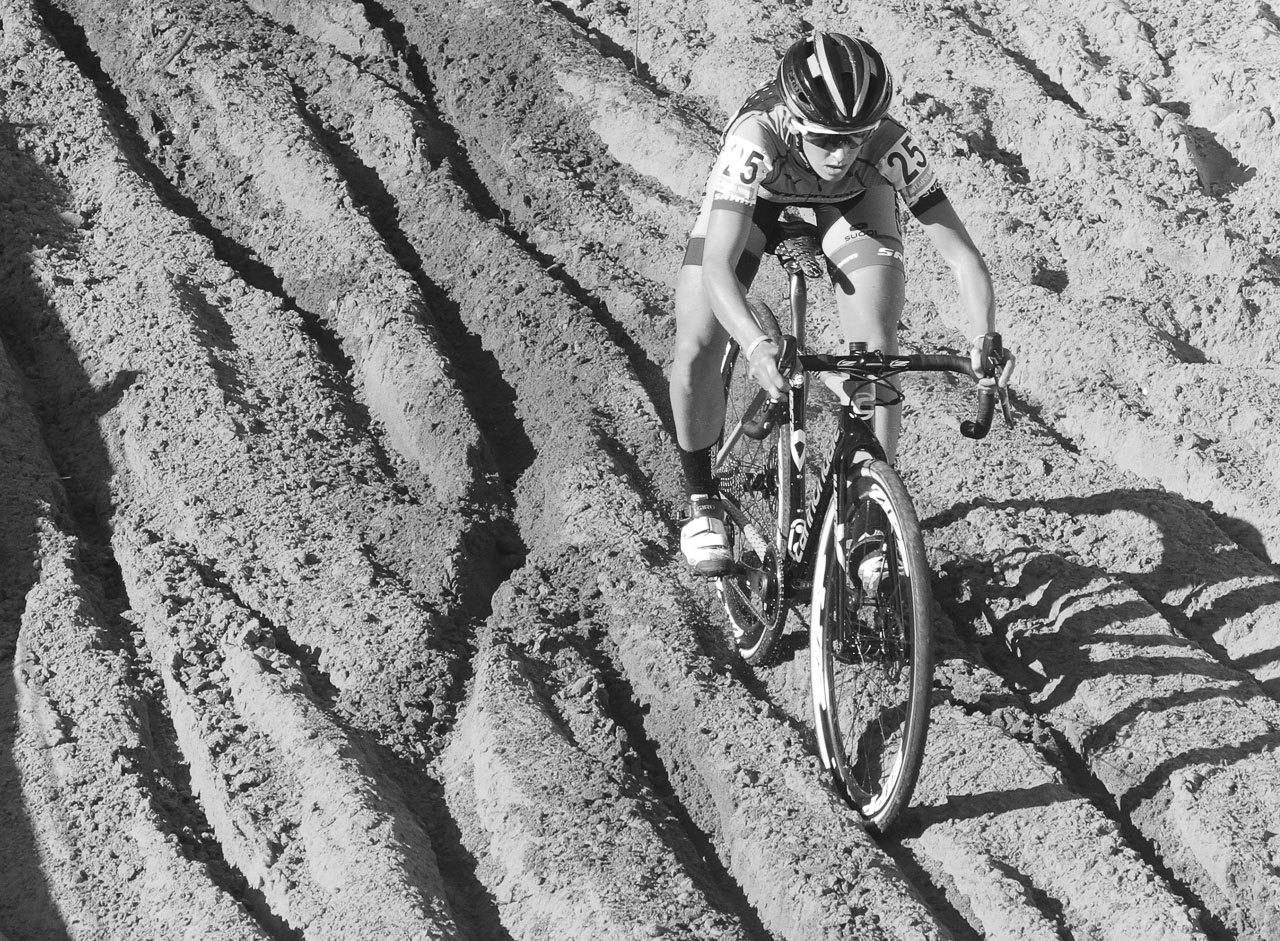
This is the perfect time of year to step off the bike and take a trip to the beach. Kaitie Antonneau at 2016 Superprestige Zonhoven. (© Bart Hazen / Cyclocross Magazine)
The biggest objection is that you’ll lose fitness. I promise you won’t. That sort of detraining takes more like two weeks to really set in.
Even if you do lose some fitness, I’d always much rather have a client who’s a little behind schedule on fitness but motivated to train, rather than a client as fit as they’ve ever been but wanting to take a nap rather than do some ’cross-specific intensity.
There are a lot of object lessons in this too. Always beware the person who breaks a bone in June or July and is forced off the bike. They will be flying by the time ’cross season comes around. Yes, it’s going to feel weird doing “nothing.” But learn to embrace that uncertainty as much as you would that copper taste in your mouth on the last lap of ’cross race.
So why take a break? You’ve probably spent the summer riding as much as you can. With the good weather and late sunsets that’s pretty easy to do. Maybe you’ve been racing gravel, road or MTB. All of those long miles have developed a huge aerobic engine that can ride all day.
But what we’ll need shortly is a well-tuned engine that can do multiple short bursts over races of 30 to 60 minutes. It’s a very different sort of fitness that takes a lot of dedicated work. But it’s the sort of work that takes someone who is well rested and isn’t carrying a lot of fatigue from previous training. You need to feel springy, motivated, antsy. You can’t do that if you’re tired. Reducing volume lets you recover from all the hard training you’ve done and lays the groundwork to let you absorb the next round of training.
When to take a break? If possible I’d schedule it around whatever your family is doing. Instead of freaking out about not being able to ride on vacation, or trying to do workouts on unfamiliar roads, just leave the bike at home. Enjoy whatever is on the agenda. Focus on being present with those around you and strengthening those bonds. You’re going to be gone every weekend for almost three months.
Try and balance that out with some dedicated focused time with the people around you. If you don’t have a vacation planned, find or program a gap in your schedule where you can take a weekend off from racing, typically late July, roughly eight weeks before your ’cross season kicks off in earnest.
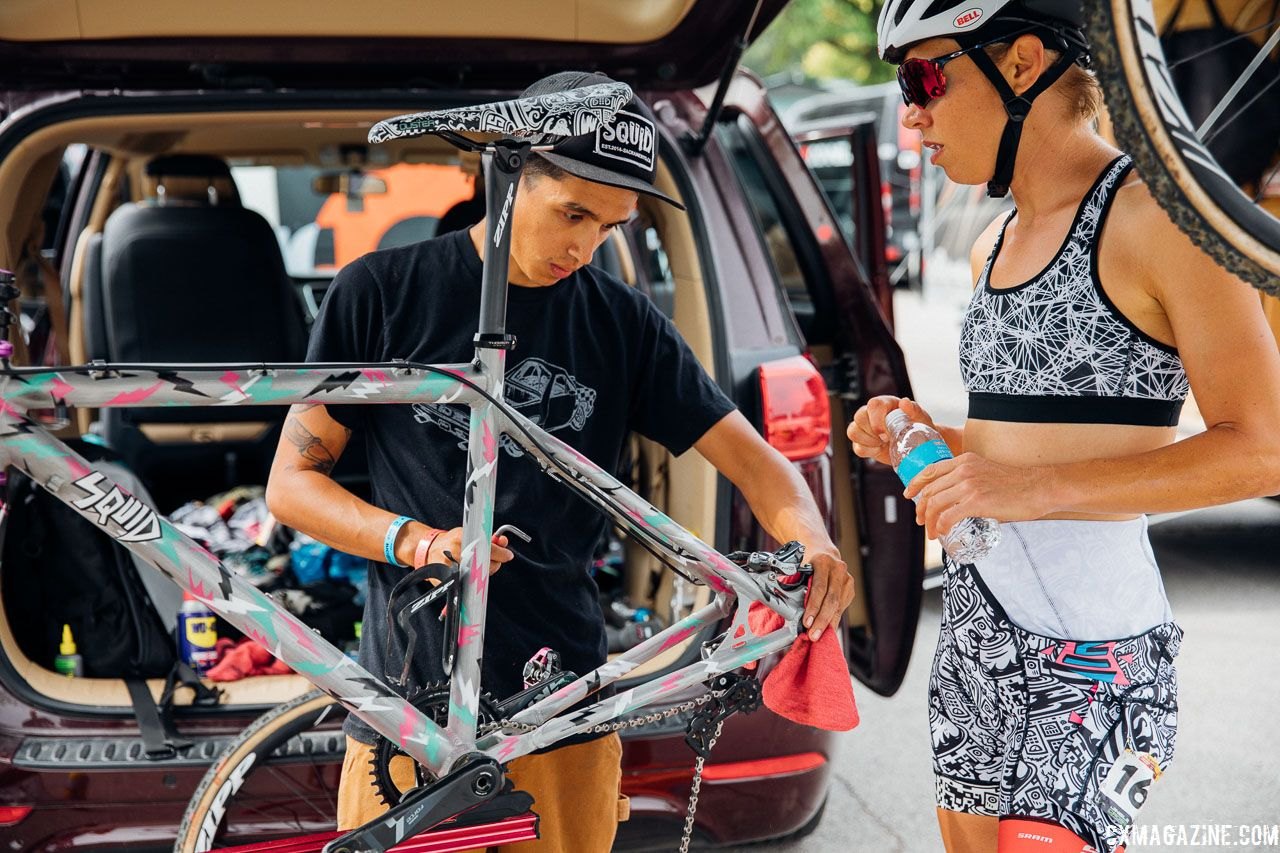
Now is a good time to focus on getting your cyclocross bike ready for the coming season. 2017 Jingle Cross World Cup. © J. Curtes / Cyclocross Magazine
What to do during your break, now what you’re going to have a few free hours on your hands? The main thing I emphasize to clients is getting your bike ready for the season. My bike has sat untouched in the basement since my last race at Capitol Cross. I am sure it needs new cables and housing. Perhaps headset bearings or chainrings. Take the extra time and get your bike in good running order. Or drop it off at the shop now to give them plenty of time to get it in good working order.
But you need that bike to be working hopefully by August 1st (roughly). So don’t wait till July 31st to look at it. Now is also the time to take stock of the rest of your ’cross equipment, including clothing, shoes, helmet and see what needs to be replaced or repaired.
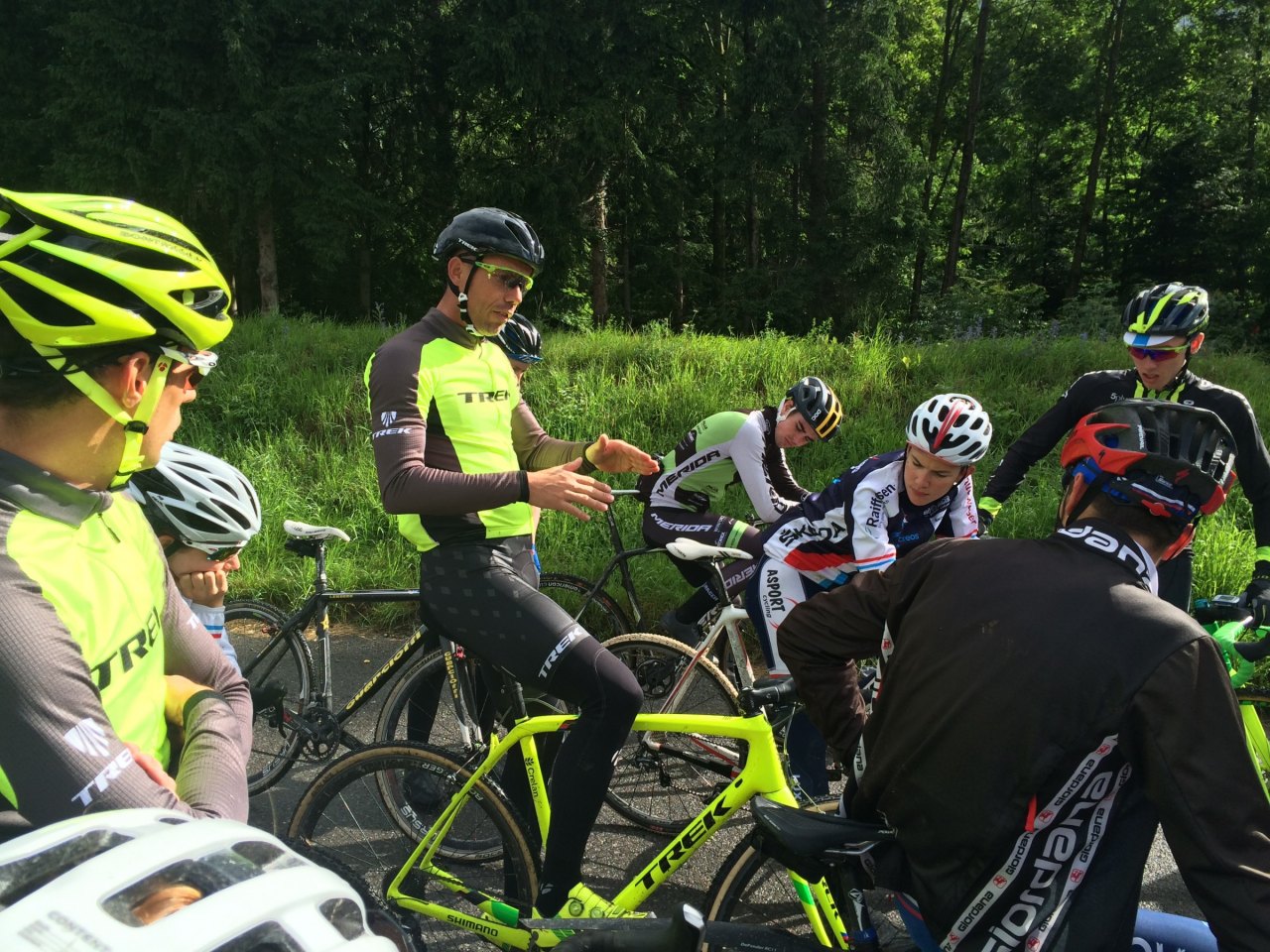
Take a break now to get ready when cyclocross clinics start next month. UCI CX Training Camp 5.0. Photo courtesy Geoff Proctor.
It’s a long summer of sunny days and long miles in the sun. It’s what we all think of when we think of what we like about riding bikes. But ’cross is not too far off and it’s time to start thinking about how to prepare for it.
One of the foundations of that preparation is taking some down time to rest, recuperate and refocus on the specificity of training that cyclocross requires. Start thinking about when and how to take that break now so that when the time comes you’re ready for what is typically one of the harder aspects of training to deal with.
Stay tuned for more #crossiscoming content between now and the start of the 2018 cyclocross season.
























